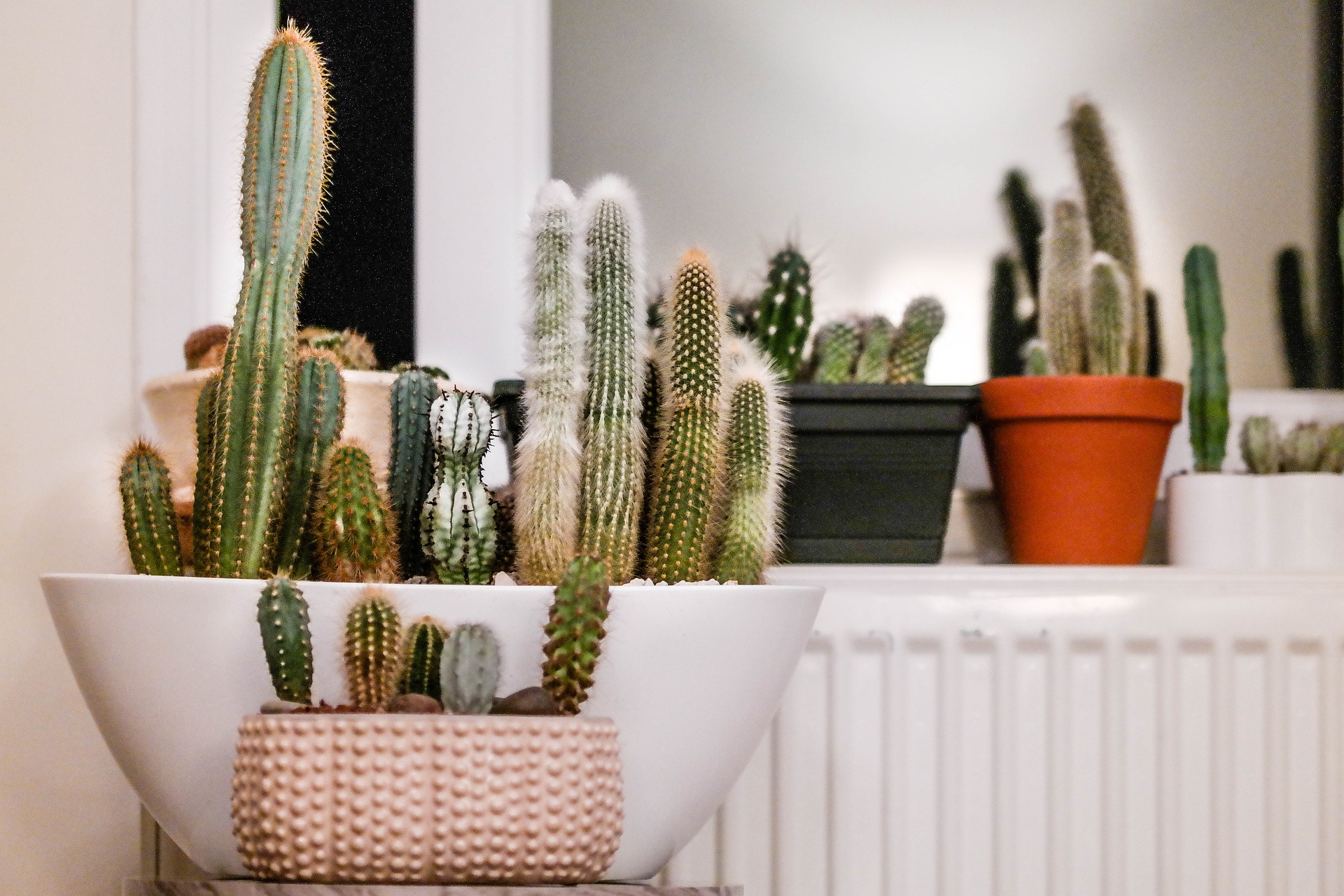
Your kitchen might be furnished with all essential appliances from juicers, fryers, microwave, coffee machine to serve you with nothing less than the best culinary results. And why not? Cooking is an art, technology, science and craft, all mingled in one skill. So, all that you welcome in your kitchen to give you the utmost sense of fulfilment is admissible.
Centuries ago, when cooking was not dependent on technology, there were various natural and eco-friendly methods to enhance the cooking and ultimately, the food. Why not bring back the flavours from the past! It’s time to include some indoor plants in your kitchen that will enrich your food and also, lend an aesthetic appeal to the kitchen. Read more about them:
-
Mint
Belonging to the Lamiaceae family, mint is one of the easiest and most common kitchen herbs that is extensively used in Middle Eastern cooking, mostly Iranian and Lebanese cuisine, because of its fresh and sprightly fragrance and taste. It possesses great antioxidant properties and potential health benefits, whether you use it fresh or dried. You can include it in salad and various sweet and savoury dishes.
-
Thyme
The word Thyme is derived from the Greek word thumus, or courage. Thyme herb is native to Mediterranean region with various species popular in Europe, western Asia and North Africa. It is an aromatic, perennial green indoor plant used to flavour with tomatoes, meat and beans. You can add flavour and aroma to your lentils and soups by adding dried thyme leaves after cooking.
-
Parsley
Parsley is a bushy herb with a mildly bitter taste that adds flavour to savoury dishes. The dark, shiny leaves on the short stem have wonderfully nutritious and healing properties. Chopped parsley can be used in salads, fresh juices, boiled potatoes and vegetable sautes. You can either dry them or purchase the dried and stored parsley to garnish your pizza, salads, dips and soups.
-
Dill
Belonging to the celery family Apiaceae, Dill was first incorporated in cooking by Eastern European immigrants. It is widely popular in Eurasia because of its aromatic pungent smell and great flavours. Fresh dill has a shorter life and soon turns mushy. So, pluck the plant only when you are ready to use it. Also, in the process of buying the plant from the vendor or growing the same, make sure to avoid yellow, overmature leaves as they do nothing to lend flavour to your food. However, the flowers of the plant are edible.
-
Basil
Belonging to the Lamiaceae family, the term “basil” has its roots in the Greek word, basilikohn, which means “royal” or “king.” One of the most readily available indoor plants online, the revered basil has its origins in India and is being cultivated for over 5000 years. It is Mostly favoured in cuisines of Thailand, Vietnam, Laos and Italy. It possesses antioxidant flavonoids and anti-inflammatory properties and can be had raw as well used in cooked meals.
-
Curry Leaves
Curry leaves belong to the subtropical sweet neem (Murraya koenigii) tree. They are widely used in Indian and Sri-Lankan cooking and pair well with fish, vegies, coconut, mustard seeds, lentils and turmeric in slow cooking curries. They are also a part of Ayurvedic medicine because of their antioxidant, antimicrobial, anti-inflammatory, and antidiabetic properties.
-
Fennel
Native to Mediterranean region, fennel leaves have a strong flavour like that of anise while they resemble dill. The bulb of the plant can be eaten raw, sauteed, grilled or used in salads. The perennial herb is widely popular across India, Afghanistan, Iran, and the rest of the Middle East. It is rich in dietary fibre and is greatly helpful in maintaining the blood pressure.
The spectrum of indoor plants is wide. They are the wonders that provide various mental, physical and health benefits. So, deck up your home with these beauties and lead a healthy, stress-free life.